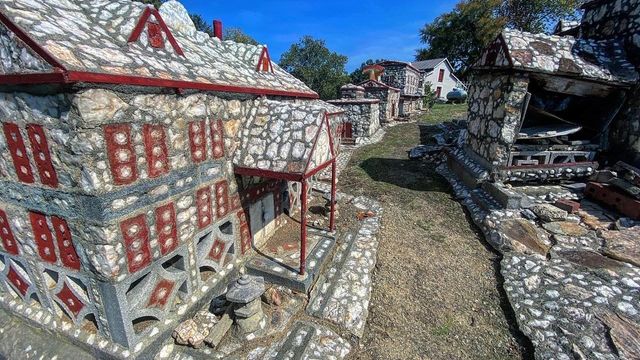'Paradise on earth:' Miniature stone village from 1960s hidden in rural NC
Many people have no idea that North Carolina has its very own version of utopia - a miniature stone village tucked away in a rural part of Caswell County.
Posted — UpdatedThe entire town was built by just one man – a retired tobacco farmer who quarried the stone from the earth himself but died before he could finish.
As the name implies, it's very magical.
A tour of the tiny fairytale town
Henry Warren began building Shangri-La in 1968, when he was 75 years old. Even as he battled cancer during the final years of his life, he continued building his little stone paradise by the side of the road.
His miniature, whimsical town began with just one building but continued expanding year by year as Warren's vision grew.
An engraved slate by the town's entrance welcomes visitors with a quote:
“Let me live in the house by the side of the road and be a friend to man.”
Like many real-life towns, it's built around a water source. From the center of town, a tall metal water tower overlooks the rest of the village. A little fisherman casts his line into the waterhole beneath, and a waterwheel uses the water to energize the mill.
Warren continued quarrying stones and adding buildings – everything a little village could need in order to thrive. He built a school, a church, library, houses.
He was working on the village's final building, a hospital, when he passed away. In his memory, his family ensured his final structure was built.
The town's tiny inhabitants
Although Warren has been gone for many years, the town remains an active and lively place. Visiting children and families explore, wide-eyed, as if they've been transported inside a fairytale.
Over the decades, it's become customary for guests to leave a toy or trinket behind to join the village. Guests who look closely may discover generations of lost toys, left behind to live out their days in Shangri-La. Peeking out of windows, hiding behind doors, standing on rooftops and porches – these small baubles are the inhabitants of the village.
Even the jail has sad toys trapped within the bars – leaving guests to wonder what these criminal toys must have done wrong.
One legend states that fairies themselves live in the beautiful quartz and stone homes. North Carolina mythology includes everything from mermaids in the Cape Fear River to fairies in the Blue Ridge Mountains; from the Santer of Bladenboro to Bigfoot in the Uwharrie National Forest. It wouldn't be so strange to imagine mythological stories growing around this whimsical village that has brought magic to so many North Carolinians.
Want to visit Shangri-La Stone Village?
The tiny tourist attraction is open for visitors and even has a visitor notebook, where guests can leave a message etched in time for Shangri-La history.
If you're looking for a fun family activity to do this autumn, you can visit Shangri-La at 11535 N.C. Highway 86 in Prospect Hill.
Podcast: Hear the magical story behind Shangri-La
Where did the idea of 'Shangri-La' first come from? And does this real-life village accurate reflect the mythological history of the original Shangri-La? Listen as WRAL's Amanda Lamb talks to our Hidden Historian Heather Leah about her visit – and how closely the artist captured the mythological village.
Related Topics
• Credits
Copyright 2024 by Capitol Broadcasting Company. All rights reserved. This material may not be published, broadcast, rewritten or redistributed.






